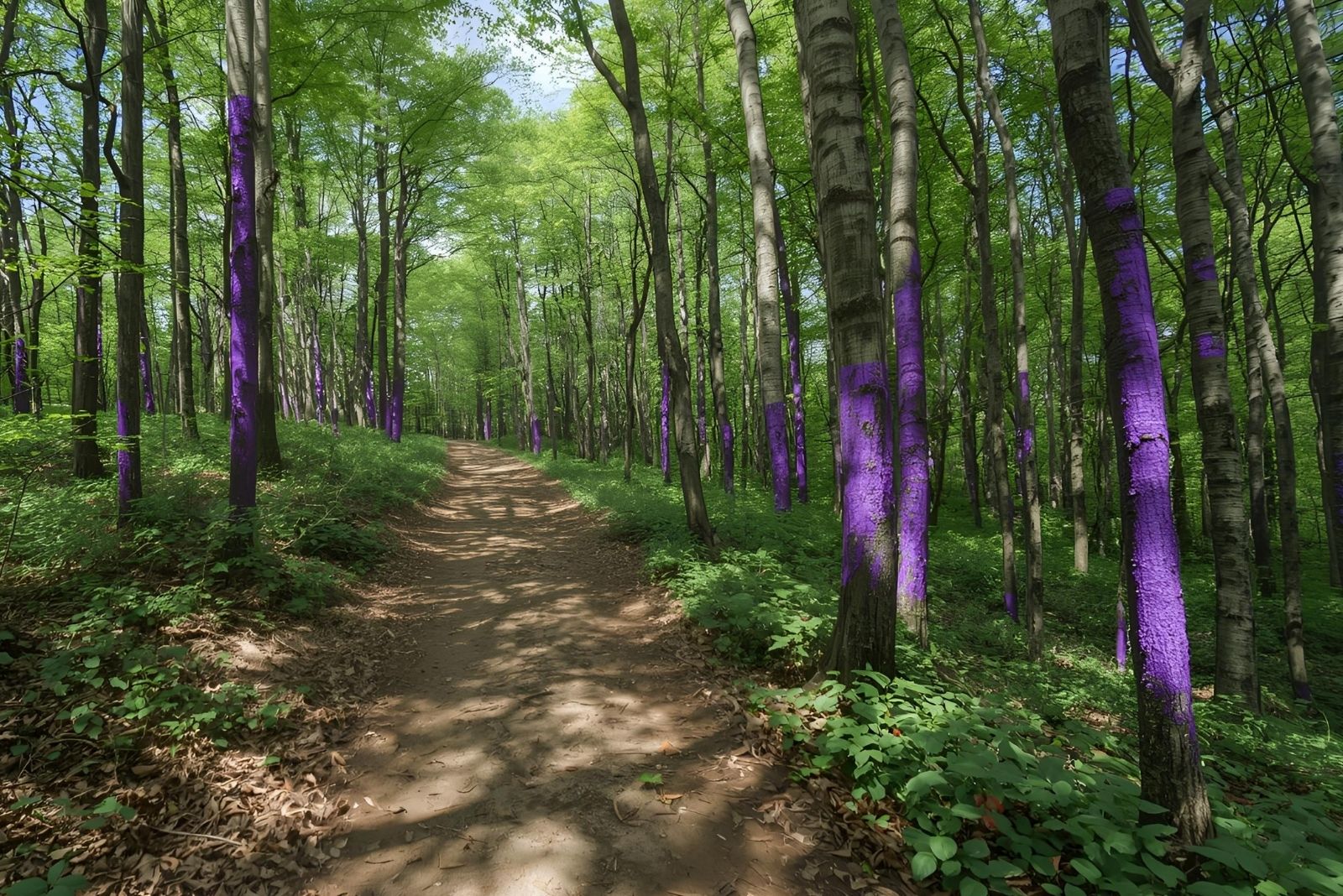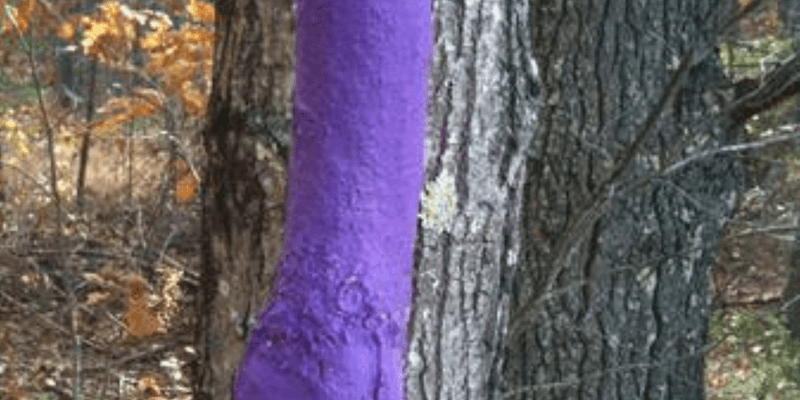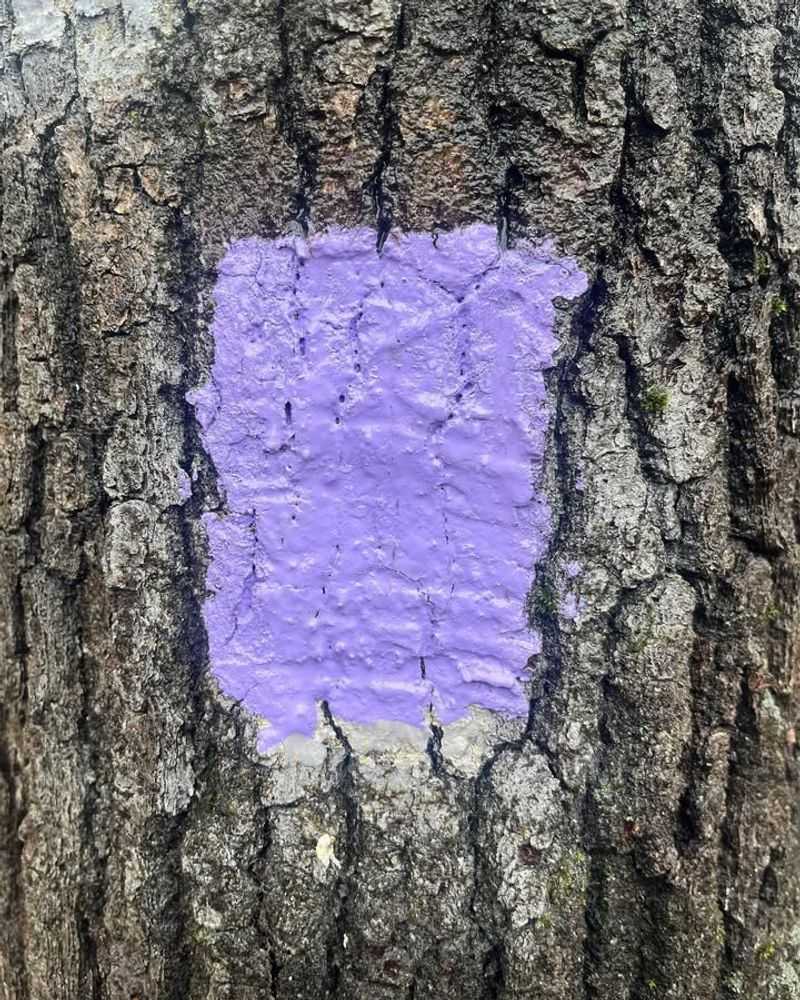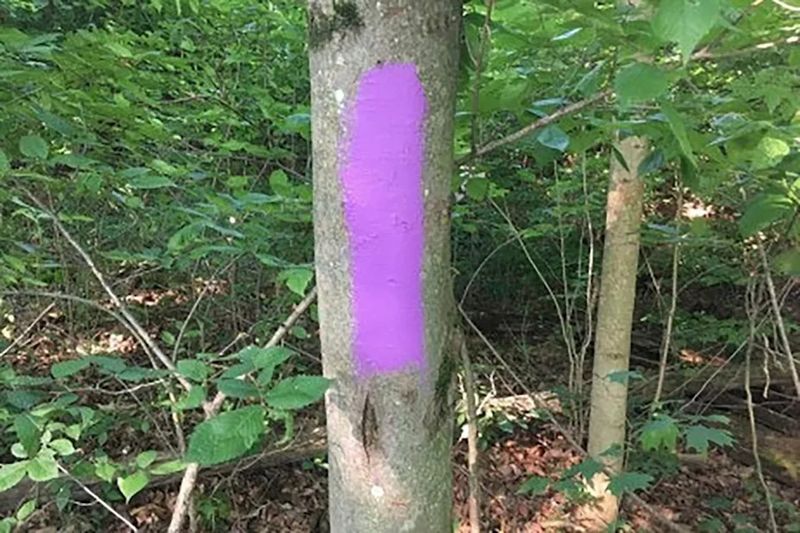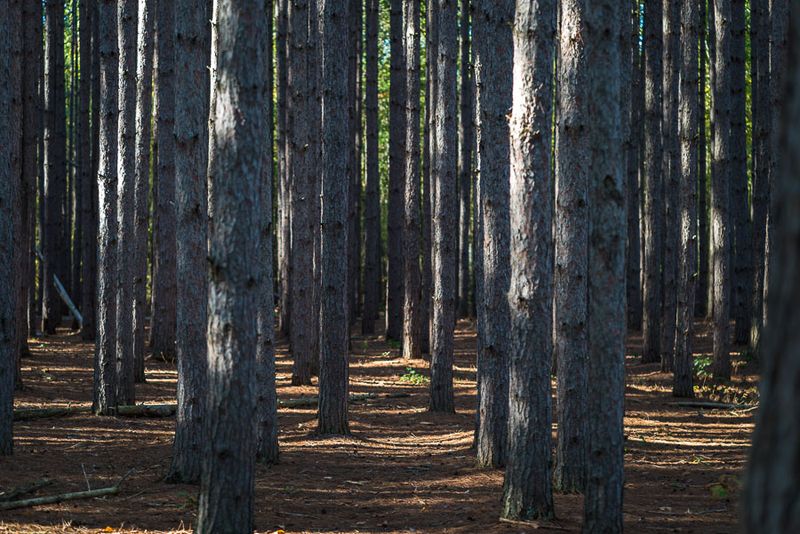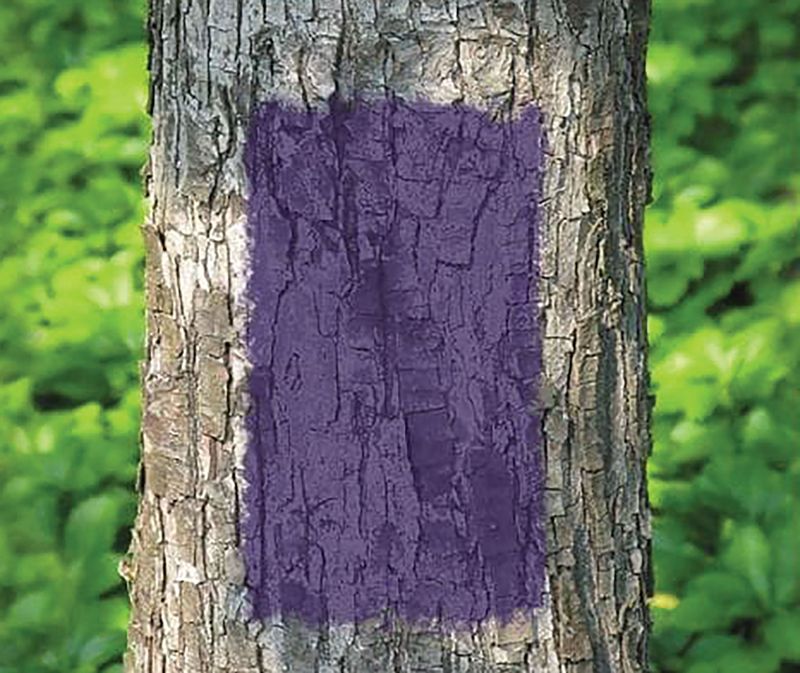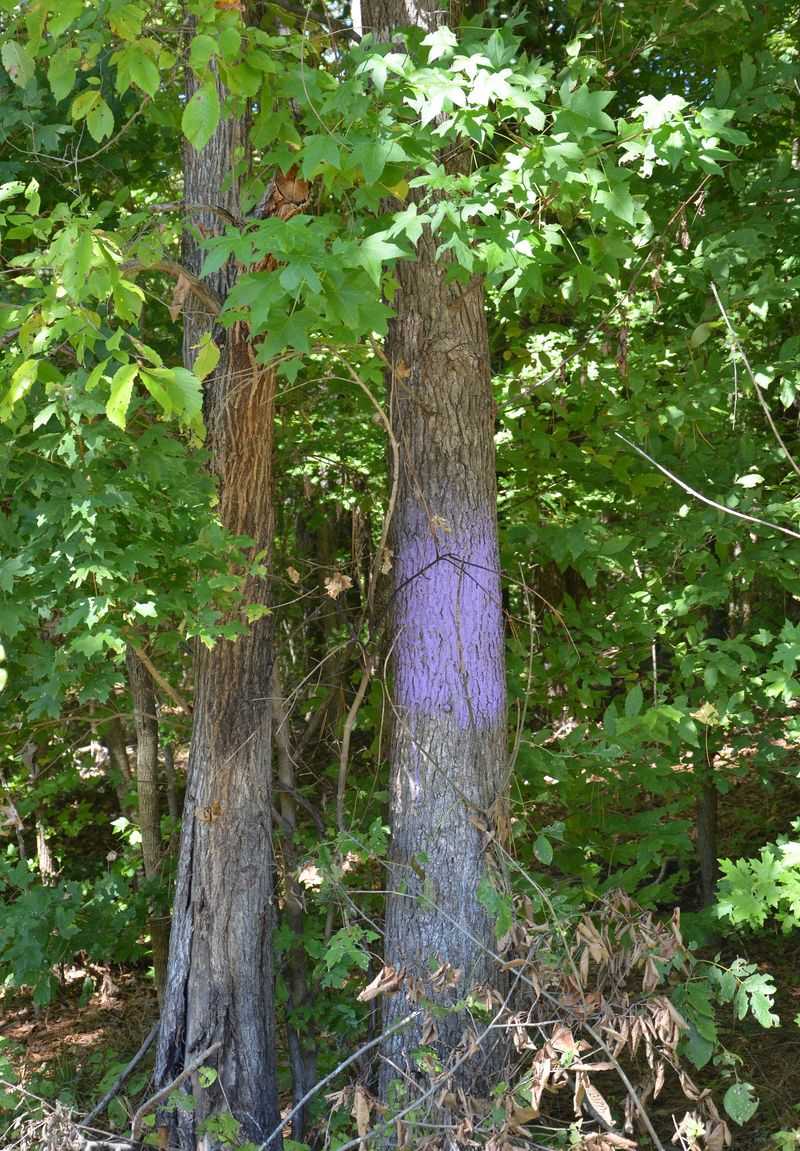Have you ever walked through an Ohio forest and spotted trees marked with bright purple paint? It might seem strange at first, but those vivid splashes of color serve important purposes.
Understanding why trees get this special treatment can help you stay safe, respect property rights, and appreciate the careful planning that goes into managing Ohio’s beautiful woodlands.
1. Property Boundary Markers
Landowners often use purple paint to clearly mark where their property ends and another begins. Instead of putting up expensive fences or signs that can fall down or get damaged by weather, a simple coat of purple paint does the job perfectly.
This method lasts for years and stays visible through all seasons. When you see purple marks on trees, you know you’re approaching or crossing onto someone’s private land, helping prevent accidental trespassing.
2. No Trespassing Warnings
Purple paint serves as a legal no trespassing sign in many states, though Ohio’s specific laws vary. Property owners prefer this approach because metal signs get stolen, rust away, or become hidden by growing vegetation over time.
A fresh coat of purple paint every few years keeps the warning clear and effective. Hikers and outdoor enthusiasts should always respect these markings and turn back when they spot them on trees.
3. Timber Harvest Identification
Foresters use purple paint to identify which trees will be cut down during logging operations. This color-coding system prevents mistakes and ensures only selected trees get harvested while others remain standing.
Different colors mean different things in forestry work, and purple often indicates trees marked for removal or special attention. This careful planning helps maintain healthy forests while still allowing sustainable lumber production across Ohio’s woodlands.
4. Wildlife Management Areas
Conservation officers paint trees purple to mark special wildlife protection zones where certain activities are restricted. These areas might be breeding grounds for endangered species or habitats that need extra protection during specific seasons.
Hunters and fishermen should pay close attention to these markings, as they indicate where special rules apply. Respecting these boundaries helps Ohio’s wildlife populations thrive and ensures future generations can enjoy nature too.
5. Trail System Boundaries
Park rangers sometimes use purple paint to show hikers where official trails end and restricted areas begin. Wandering off marked paths can damage sensitive ecosystems or put visitors in danger from steep terrain or unstable ground.
Following these visual guides keeps everyone safe while protecting plant life that takes years to recover from trampling. Always stay between the purple markers when exploring Ohio’s beautiful parks and natural areas.
6. Disease Or Pest Control Zones
Environmental scientists mark trees with purple paint when dealing with tree diseases or invasive pest infestations. These markings help crews track which areas have been treated or which trees need removal to prevent problems from spreading.
Emerald ash borers and other destructive insects have damaged millions of Ohio trees in recent years. Purple paint helps organize the massive effort required to manage these threats and protect our remaining healthy forests.

